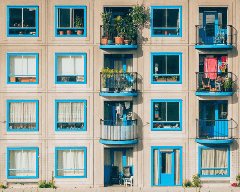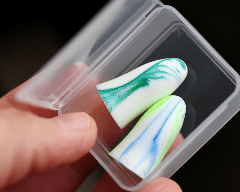 Good noise control makes good neighbors, especially for those living or working in multi-floor buildings. In fact, noise is a top complaint among condominium owners. But while most condo associations require the installation of floor soundproofing products before the installation of flooring, some board members make rules that are not strict enough to achieve soundproof floors.
Good noise control makes good neighbors, especially for those living or working in multi-floor buildings. In fact, noise is a top complaint among condominium owners. But while most condo associations require the installation of floor soundproofing products before the installation of flooring, some board members make rules that are not strict enough to achieve soundproof floors.
When building construction is planned, sound reduction to reduce noise between floors must be factored in. The flooring’s setting material and slab thickness all play a part in the sound rating. Plus, carpet, wood and vinyl absorb sound better than ceramic tiles.
Sound-reduction materials are a growing trend in the building industry. They diminish the transfer of sound, such as footfall noise, from one floor to the floor below, and even sound within the walls of a room.
An acoustics engineer needs to compute and quantify the loss of sound transmission with the use of sound-reduction products, through either walls or the floor below. Sound-reduction products in conjunction with or without their assemblies (with or without a suspended ceiling) can be tested for three ratings:
In layman’s terms, the STC rating determines approximately how much the existing floors, walls and/or ceilings in a room reduces (or “attenuates”) sound transmission. The industry test standard for STC ratings is ASTM E90, from ASTM International.
The following testing method summary is provided courtesy of NGC Testing Services, one of the most sophisticated, fully accredited, independent testing facilities in North America. However, the ASTM procedures are standard.
The typical minimum building code requirement for STC protection is 50. However, this number can change from area to area.
The industry test standard for IIC sound ratings is ASTM E492. As with the STC testing information, the following steps are provided courtesy of NGC Testing Services, but the ASTM procedures are standard.
Testing for Delta IIC is essentially the same as for testing IIC, with the same measurement test procedure being used as in IIC measurement. However, there are differences.
First, the main structure over which test samples are tested is a 6" (15 cm) standard concrete floor without any material installed but a floor covering.
Second, the Delta IIC rating is calculated differently than the IIC rating: The differences in measured impact sound levels are subtracted from the levels historically defined in the standard, and these differences are then used to calculate the Delta IIC rating.
 Whether sound-insulation membranes are needed for a high-rise condominium, an apartment floor or an office building, MAPEI has innovative solutions for virtually any floor sound-reducing project:
Whether sound-insulation membranes are needed for a high-rise condominium, an apartment floor or an office building, MAPEI has innovative solutions for virtually any floor sound-reducing project:
MAPEI also manufactures two wood flooring adhesives that offer built-in properties of sound reduction and moisture control:
There’s also MAPEI’s sound-reducing tape for installing resilient and wood flooring:
When it comes to reducing sound transmissions inside buildings, MAPEI has innovative flooring underlayment products and the technical expertise to “clean up” unwanted noise pollution.
Comments
Load more comments